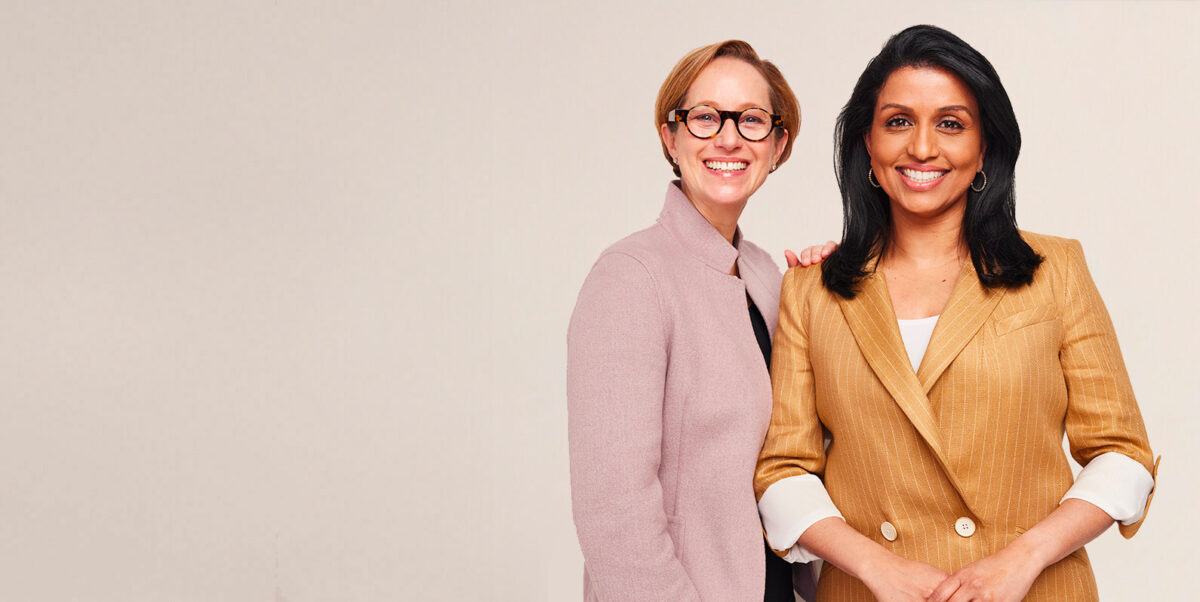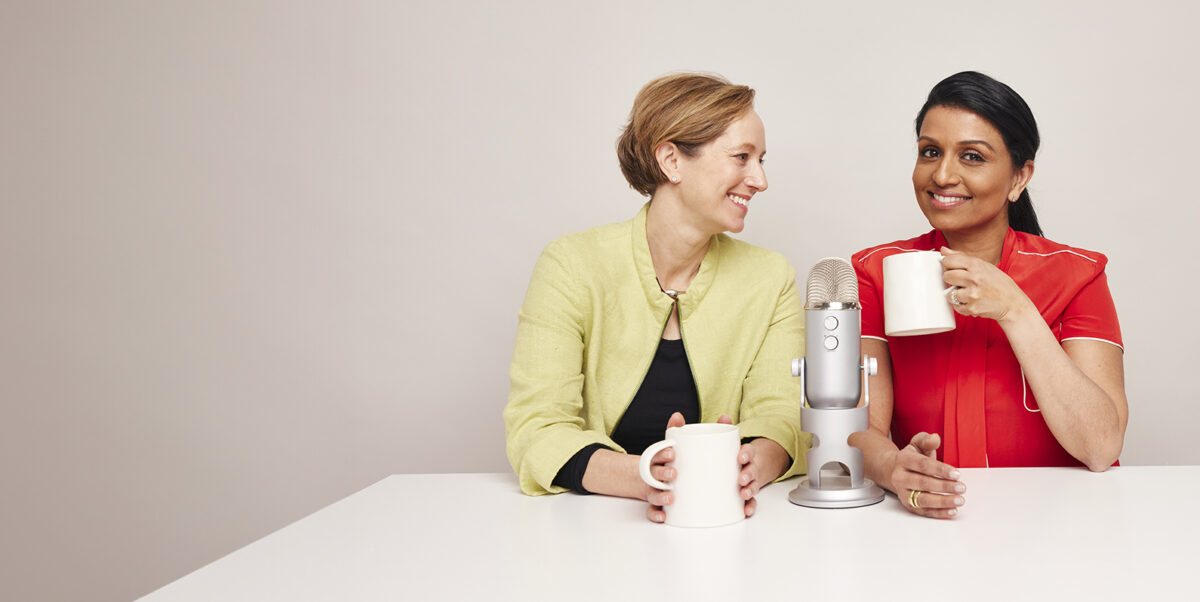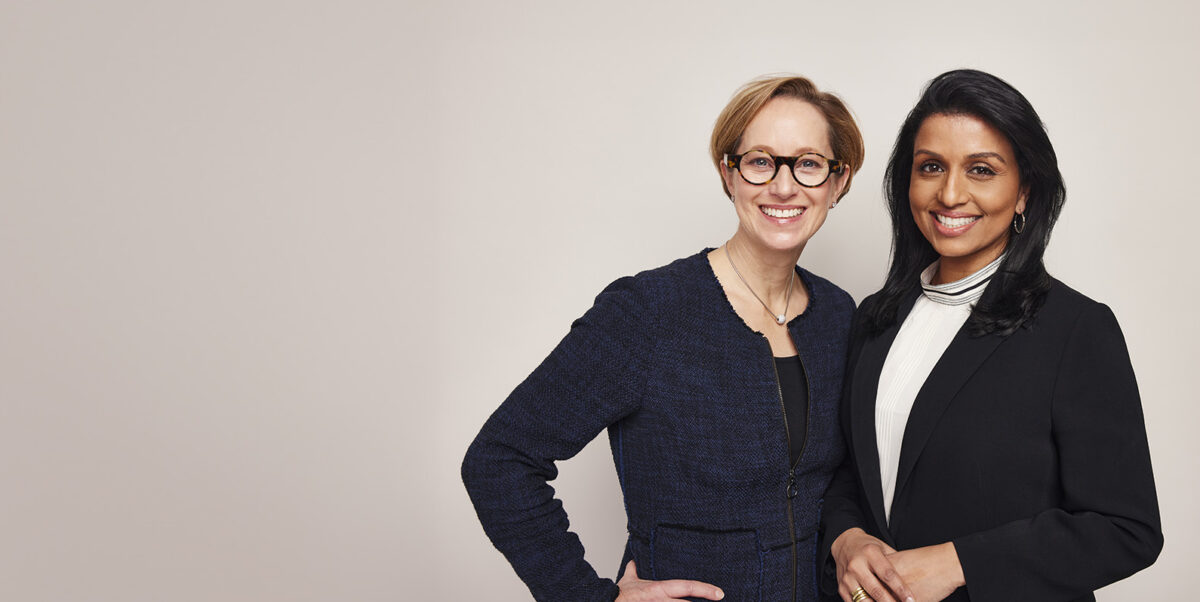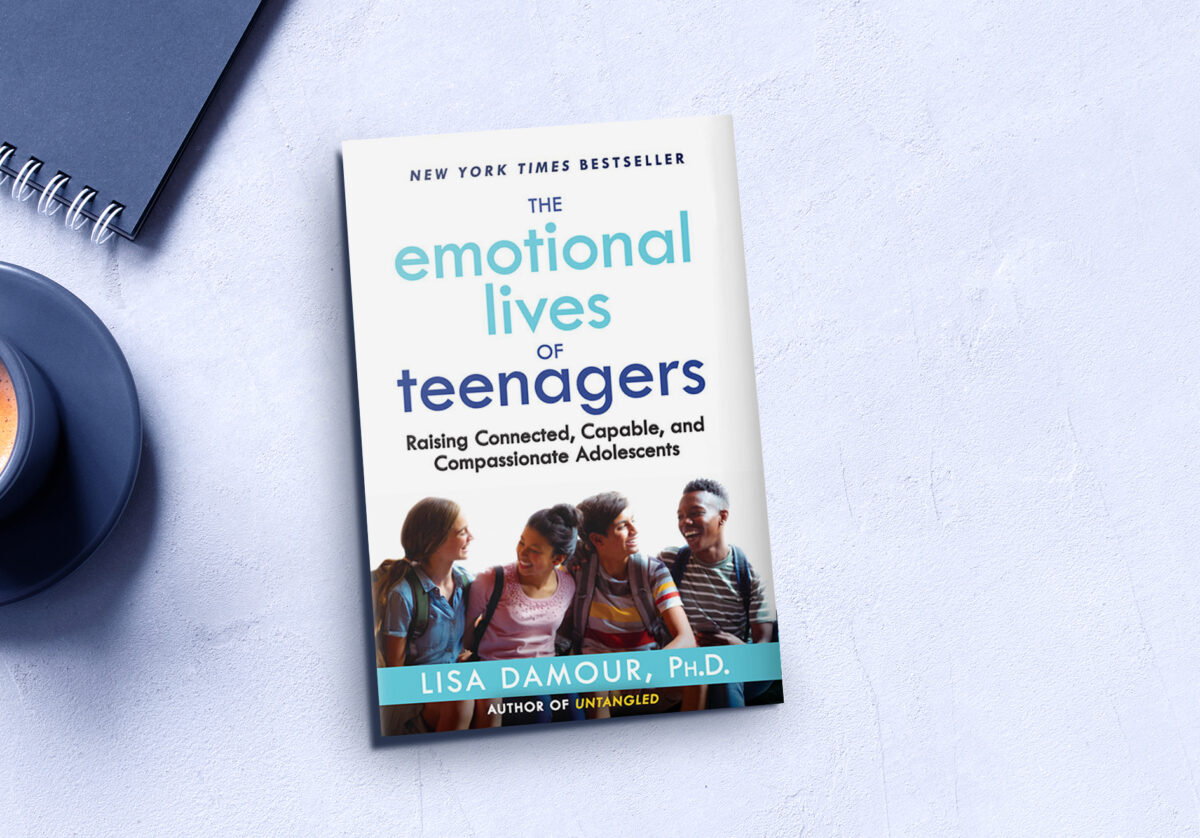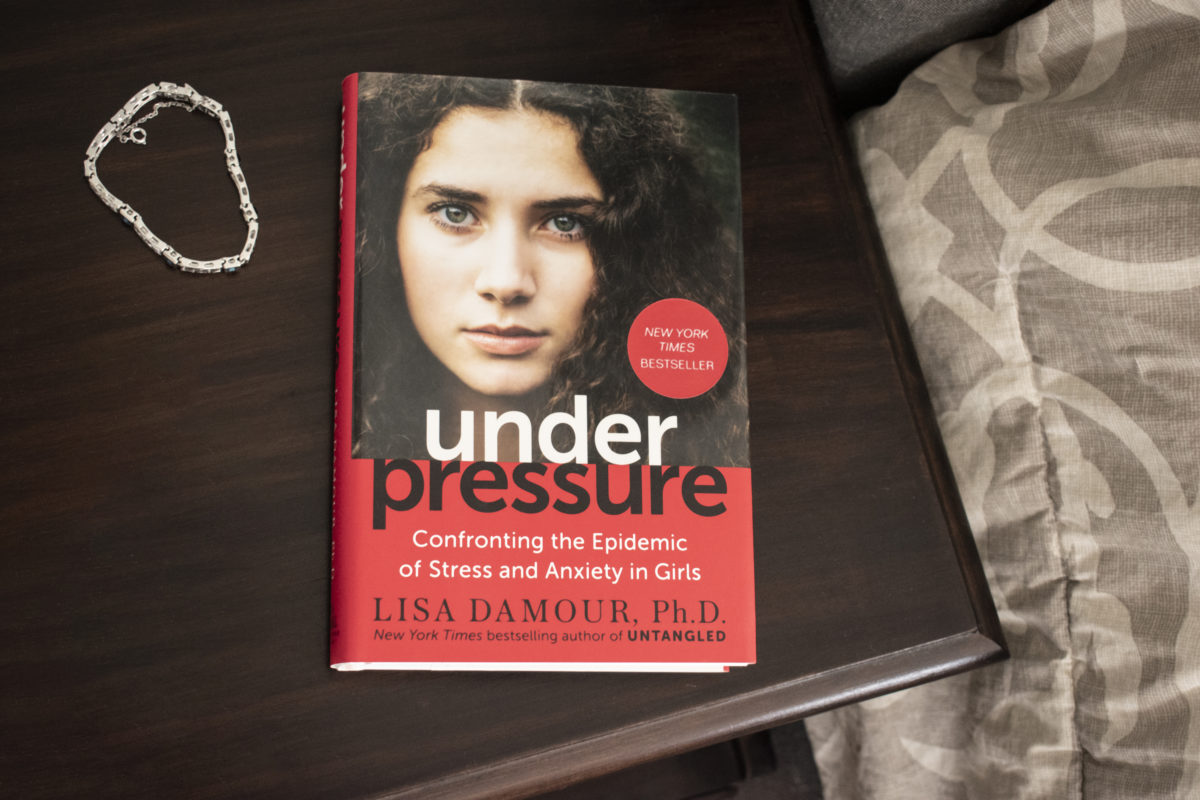Are you worried about your kids’ tech use but unsure where to start? In this episode, Dr. Lisa and Reena dive into the challenge every parent faces: guiding kids to develop healthier relationships with their devices. Lisa shares practical strategies for starting open, judgment-free conversations with your kids, co-creating family tech boundaries, and implementing key rules that can make a huge difference.
February 11, 2025 | 29 min
Transcript | How Can We Roll Back Our Kids’ Technology Use?
The Ask Lisa Podcast does not constitute medical advice and is not a substitute for professional mental health advice, diagnosis or treatment. If you have concerns about your child’s well-being, consult a physician or mental health professional.
The following transcript has been automatically generated by an AI system and should be used for informational purposes only. We cannot guarantee the accuracy, completeness, or timeliness of the information provided.
Reena Ninan:
Episode 206. How Can We Roll Back Our Kids’ Technology Use?
I guess the question for today’s podcast, can you put the genie back in the bottle with technology?
Dr. Lisa Damour:
Right. That’s the question. I think that is the billion dollar question, Reena, once your kids have it and once you see that you don’t like how they’re using it now, what do you do?
Reena Ninan:
I can’t wait to have this conversation with you. I want to read you the letter that we got that I feel like every parent across the world deals with here.
Dear Dr. Lisa, I have a love-hate relationship with technology. I get it. Technology is exciting and useful and a necessity in our society, but I’m now the mother of three kids and I hate it. It’s not just smartphones or social media, but it now is extending to YouTube, video games, and sometimes even school assignments. My partner and I desperately want to do a tech reset for all of us. I am just as guilty of wasting an hour on Instagram reels. At the same time, I recognize how integral technology has become to our lives, and I don’t want to socially isolate the kids either. Since a proverbial cat is already out of the bag, how do I get it back in without doing long-term damage to our relationship or harming my kids’ connection to their friends?
Dr. Lisa Damour:
That says it all. That says it all.
Reena Ninan:
Everything. Everything.
Dr. Lisa Damour:
Absolutely.
Reena Ninan:
So we need it, but sometimes I miss the eighties of the answering machine.
Dr. Lisa Damour:
I know. Call waiting.
Reena Ninan:
Yeah, call waiting.
Dr. Lisa Damour:
Wait lines. I know, I know Reena. Okay. Okay, so I want to go big on this question. I don’t want to just think like, oh, well here’s four new rules to try on your kids because there’s something so essential in this letter, which is this parent is saying, it’s my problem too. And I think that’s what we’re saying, right? It’s our kids. It’s us. It feels everywhere. It feels uncontrolled. So here’s how I want us to think this through together. So being a psychologist, I always come at this from the standpoint of human behavior makes sense. That when we are doing things, it makes sense even if we are doing things that are against our own interests. That’s how I was taught to think.
We are using technology in ways that we end up feeling very unhappy about. Our kids are using technology in ways that we don’t think are necessarily always good for them, but we can’t, I think, go at what to do about it until we figure out, but why do we use it in these ways that are problematic? So I want to actually go kind of think it through together. Why do we use technology Reena? Why do you use technology and go big? What are the big domains that bring you to technology?
Reena Ninan:
Okay. I want to validate why I use it, work, I need to be on my phone for work. I need to have it. I need to read emails. I need to be on it all the time because people expect me to respond fast.
Dr. Lisa Damour:
Okay, so work. So email and texting on your phone and computer sometimes for work. Okay, so that’s one. That’s a why. That’s a why. Okay. What’s another “why” we use technology?
Reena Ninan:
Connection. To connect with people, know how everyone’s doing. We live in such a fast-paced society. We don’t write letters anymore, right?
Dr. Lisa Damour:
No, actually, do you have letters? I have saved letters.
Reena Ninan:
I have some from my middle school years when I was pen pals with girlfriends that I am really, really close to still. But no, nobody writes letters. Nobody even sends a postcard. When was the last time you sent a postcard when you were on vacation?
Dr. Lisa Damour:
Never. No. You text photos of what you’re doing on vacation.
Reena Ninan:
Totally.
Dr. Lisa Damour:
Absolutely. But okay. But again, that’s connection and that’s good connection, right? We like that. And that’s a good use of technology is what I will say. It’s connecting. We’ve replaced how we used to connect with this form. It works well. It’s efficient. You don’t have to, well, do you also remember being in a foreign country and trying to find a stamp and figure out how much stamp was involved? And we don’t do that anymore either, which is probably fine.
Reena Ninan:
Totally right.
Dr. Lisa Damour:
Okay. So we use it for work. We use it for connection. These are the why’s. What else?
Reena Ninan:
We use it also, and I don’t want to admit that we do for as much as we do. Entertainment value.
Dr. Lisa Damour:
Yep, yep. You’re speaking to a woman who found herself last night, sitting in the living room, scrolling through Instagram reels, got some really weird ones, kept going, I am right there with you, Reena. Sometimes it’s the dumb mindless thing. I find myself doing.
Reena Ninan:
Well, you are better than me because now my bank account is half because I bought everything at Costco online for scrolling products. I see. And suddenly have to buy.
Dr. Lisa Damour:
Oh, so you’re using it. You’re buying Costco products off of your computer.
Reena Ninan:
I’m buying all sorts of products that I don’t need. Whatever. Anything that I see suddenly will help me with my hair to look better or take my dark circles away. I’m always looking for something.
Dr. Lisa Damour:
So you start on a social media platform and then you’re like, I must have this item.
Reena Ninan:
Oh yeah.
Dr. Lisa Damour:
Yeah. Me too.
Reena Ninan:
My gosh.
Dr. Lisa Damour:
Alright. But this is interesting because what we started to actually tease apart, and I want to think about this actually. Domain. Domain by domain. So if we’ve done the domain, so we’ve got work, we’ve got connection, we’ve got leisure. Anything else?
Reena Ninan:
Those are the big ones for me, I think. Anything else you can think of?
Dr. Lisa Damour:
I think those are the big, I think we could also think about things like finances, maintaining household stuff, but
Reena Ninan:
I think I put that under work. That’s under work.
Dr. Lisa Damour:
Things we just use it must do.
That’s a goat. Exactly. Okay, I like that. So if we go back to what we were just saying about the leisure piece, that it starts, I will say in a way that I can feel okay about, I was cooked yesterday and just somehow sitting there in the living room scrolling through Instagram reels was actually quite gratifying. I was enjoying it.
Reena Ninan:
Why are we so can you explain that before we go any further? Why do we get sucked down? It’s so easy and so addictive.
Dr. Lisa Damour:
Well, I mean, the answer is really one word. It’s like the algorithm is brilliant and knows what to put in front of me at 9:00 PM when I am cooked and want something just for entertainment, it has so much data on me that it’s actually, that’s the why. It’s serving up salt, sugar, fat, magic into my Instagram feed when I have a heavy craving. But let’s be gentle with ourselves. Even that the start of that I can get into and I can enjoy and I can even, and this is my favorite version of this, find something that’s actually really fun to show my kid or my husband that we take shared pleasure in that I think is both entertainment and connection and technology working well. So there’s ways it works well. I would say in all of the domains that you have articulated, it veers over a line from working well and being effective to becoming a problem. And I think it’s that line that we want to try to articulate. And then here’s my grand design for this episode, Reena, help have conversations with our kids about where’s the line between when it’s working and when it’s a problem or should be something else should be happening instead. How do we describe that line? How do we notice that line and how do we make decisions as individuals and as a family to try to stay on the good side of tech? That’s my grand scheme. What do you think? Love it.
Reena Ninan:
Well, the big takeaway I always say about this podcast for me is having the conversations. They don’t even need to be long, but your kids aren’t even aware until you drop it and talk to them. And then you could just walk away. You don’t have to. But to me, you know what it feels like with technology. It’s like I love potato chips, but I could sit and eat a whole bag of potato chips.
Dr. Lisa Damour:
That’s exactly what it’s like, Reena. That’s exactly, or it’s like drinking, right? Yeah. A glass of wine can be a wonderful thing. Slamming the whole bottle by yourself on a lonely night, that’s a problem.
Reena Ninan:
Not too good and not a good feeling, right? It’s that feeling after you’ve done it.
Dr. Lisa Damour:
Exactly.
Reena Ninan:
So why do I keep doing it and knowing I’m going to feel that way?
Dr. Lisa Damour:
Well, I think truly honestly, Reena, I think the trick with tech is that it’s built into the devices to get us to cross that line. I mean, I think that that’s the thing that other things that are wonderful that can turn into vices don’t necessarily have the built-in the tech, no question has the built-in of stay, stay, stay, cross the line from healthy use to not so healthy use, let’s call it that. Healthy use, unhealthy use. And what I like Reena, I like finding analogies to other parts of life. Like some potato chips. Wonderful. Three bags later. You have regrets, right?
Reena Ninan:
Oh gosh.
Dr. Lisa Damour:
But we have our ways of talking and thinking about that, that feel familiar, comfortable, natural. And I think as we start to work our way through this way of thinking and then work our way towards thinking about how we talk with kids, anytime you can make an analogy between how we use tech and how we deal with other tempting things in our lives. I think it’s good for adults because then it makes us think like, oh, this isn’t so foreign and strange. It’s like other things I know well.
And I also think it helps us be more empathic with kids. I think sometimes when kids are looking at stuff on YouTube, you’re like, what is up with that kid? That is so weird. But if you’re like, oh, but me and potato chips, if I make, then I’m like, okay, kid, I get it. We’ll figure it out. Some YouTube, but not tons of YouTube. I’m into broad framing. How do we walk up to this in a way that we can feel like we’ve got something bigger than just, I’m going to put a time limit and we have something bigger than saying to our kid, here’s the new rule.
One of the things that you and I have often touched on is there are topics in child development where you don’t have the talk, right? Sex, you have the conversation with your fifth grader about holding hands or if they’ve seen porn, hopefully they haven’t, but statistically it’s not unlikely. You have that conversation and then you’re having a different conversation with your 13-year-old, 14-year-old, 15-year-old. It’s an over time conversation. You’re dipping in and out of it all the time. Same with drugs, same with drinking, same with all sorts of things. It’s the same with tech. I think this is something that is just a constant in our lives. How we interact with it, how our kids are interacting with it is shifting how 12 year olds use tech and how 17 year olds use tech is going to be different. So I think the first thing we do is we start to talk about it and think about it more like those other, and I’ll call ’em risk factors that we visit regularly and check in on regularly to see where we’re at and to see what rules make sense.
Reena Ninan:
So when you’re having this conversation, how do you begin, Lisa?
Dr. Lisa Damour:
That’s what I’m trying to figure out.
Reena Ninan:
Yeah, yeah. Well maybe talking about it, right?
Dr. Lisa Damour:
I think so. Okay. But what if you sat with your kid and did kind of what you and I just did, where you say to them, talk to me about the whys behind your tech use.
When are you using it for school? Because this letter very, very fairly says I even have some anxieties about my kids using it for school. Okay, well, but they got to use it for school. When are you using it for school? When are you using it for connection? When are you using it for fun? And really hearing a kid out on that? And I think you have to be very upfront about where this is all headed, right? You can’t just, they’ll be like, what is behind this? How fast do I have to get out of this conversation to keep my phone? Is what they’re going to really be thinking. So I think you probably should frame it with like, okay, I am trying to think big about my relationship with technology and I am starting to think in domains about when I use it, why I use it, and when it goes from being working well for me to not working well for me. I’m thinking work, connection, leisure. I think maybe you have the same domains, but here’s the goal of this conversation; I want us to start thinking together. I want us to start thinking as a family about how we interact with tech in a way that we’re getting almost all upside and very little downside. But to do that, we all have to sit back and actually think about what’s the upside, what’s the downside? Domain. Domain. Domain.
Reena Ninan:
Okay.
Dr. Lisa Damour:
That’s how your kid’s probably like, oh boy.
Reena Ninan:
They don’t want to enter that conversation.
Dr. Lisa Damour:
No.
Reena Ninan:
But sometimes I find I’m surprised pleasantly that they’re open to it.
Dr. Lisa Damour:
Well, Reena, on that point, one thing I have been doing increasingly is asking teenagers who has put screen time controls on their phones themselves for themselves. I am really impressed how often I am having teenagers. They tend to be older, they tend to be sophomore, junior, seniors in high school who have on their own accord, put screen time controls. And so that’s a kid who’s figured it out, which is this is fun for me up to a limit. And then I start to feel this is 10 potato chips or half a bag of potato chips worth of enjoyment for me. But after this period of time, I am now into a volume of potato chips slash Instagram that I’m going to feel bad about, so I stop myself. So some kids have already started to think very, very carefully in this way, don’t assume your kid is going to come to this hostel to the entire idea.
Reena Ninan:
You enter the conversation, you have them look at what’s working, what isn’t for tech, what makes them feel good, what doesn’t, and how do you enter that conversation about setting boundaries? I think most kids do not want restrictions on their phone or they’re xboxing or they’re YouTubing.
Dr. Lisa Damour:
A hundred percent. Okay, so really thinking this through. So first I think you say to them, here’s the conversation I want to have and why. So that big long spiel I just did. And I think to your point, you probably have to be like, when are you open to talking about this with me? You can’t be like, stop what you’re doing. I’m about to drop some major knowledge on you about technology that will not go well. I think saying this is something we want to visit as a family. This is something I want to visit with you. I want to share my thinking on how I’ve tried to sort this out myself. Can we have a conversation Sunday night? Maybe we do it over dinner as a family, but that idea of this is not the one and done. We’re going to just be getting into this. On the boundary question, I actually think it’s probably better to do some personal work on this before taking it to your kid.
Reena Ninan:
Really?
Dr. Lisa Damour:
Yeah. Here’s what I have done lately and it felt so brave or radical to do it, but you’re going to be so disappointed in me when you hear what it was I did.
Reena Ninan:
I want to hear this now.
Dr. Lisa Damour:
So for me, email is work, right? It’s not where I’m having leisure and it’s not where I’m making meaningful connections. It’s where I do work. Actually, most of my work is best done on a computer. It usually involves other documents. It usually involves things. And so I started to think, I’m like, why do I have email on my phone? It’s actually not well suited. The phone is not well suited to the fact that email for me is work. Why is email on my phone?
Reena Ninan:
Interesting.
Dr. Lisa Damour:
So I wasn’t ready to get rid of it on my phone. I do occasionally, especially when traveling, I will need it. But I did. This was my radical move that I hope you’ll be a little proud even though it’s really kind of sad. I just took it out of the doc at the bottom of my phone and I moved it into one of the folders that I have for work on the little icon things on my phone.
Reena Ninan:
And that made a difference?
Dr. Lisa Damour:
Okay, well here, this was an interesting experiment. So the first thing that happened, and this was just wild and kind of horrifying to watch, I would pick up my phone and I would tap where it used to be.
Reena Ninan:
Interesting.
Dr. Lisa Damour:
It was incredible to just actually come up against how Pavlovian that response was in me. If I see my phone, I pick up my phone and I tap where the Gmail icon used to be, I’m like, oh my gosh. Okay, now I have resisted trying to find it again in the folder I put it in. It’s not that hard to find. And so Reena, it is actually working.
Reena Ninan:
Wow.
Dr. Lisa Damour:
For now. So that when I am checking my email, I am at a desk, I am at my computer, I mean to be doing work. So this is my effort.
Reena Ninan:
It’s huge.
Dr. Lisa Damour:
Well, it’s kind of like,
Reena Ninan:
Yeah, but you know what I’m realizing?
Dr. Lisa Damour:
Yeah?
Reena Ninan:
You have it. This is a difference between you and me. You’re so organized that you have it down on the dock. I still have been swiping for years and never put it down on the dock, and I’m still using all the emails all my time on emails.
Dr. Lisa Damour:
I think for you, this might not work. I think for you, you’re on the fly a lot more and the way you are running. So I’m, I think everybody has to do their sort of own investigation, but I think you’re having a really different conversation with your kid when you say, okay, let’s just start with the domain of work. I realized that for me, compulsively checking Gmail on my phone was work. That wasn’t working well for me. If I’m going to work on technology, I actually need to be at my desk at a computer. Doing it on my phone is not something I need to make a baseline activity. And so then you could say, so let’s just start for you with school. When is your computer working well for you? When is technology working well for you? When is it getting in the way for you of doing school? And so then I think you could have a good conversation I imagine, where the kid says, oh, I actually need to be on my computer for, and it’s not working as well for me when I am also simultaneously checking text messages the entire time I’m doing my schoolwork. And so then you say, okay, well why don’t we just start there where the line is getting crossed. What could we do to enforce that line?
What do you think? Does that sound realistic at all?
Reena Ninan:
It does sound realistic. I think. I love this idea of having the conversation of you telling us how to navigate this by everyone looking at ways it works and doesn’t work, and then having them come up with guidelines on their own instead of dictating it from the mountaintop with stone tablets. This is what it’s going to be.
Dr. Lisa Damour:
A hundred percent. Right. What I’m thinking about Reena in classrooms often, especially with younger kids, they will make classroom agreements like the rules for behavior and the teacher will have the students think it through, how do we want to be together? How do we want to act, right? And it’s exactly what you’re talking about. Rather than being like, these are the rules for my classroom. How do we want to live in this classroom together? And so we can take advantage of the fact that we are as adults as totally twisted around about technology as our kids are. And I think you could probably just do one domain at a time. Okay, next, let’s talk about connection. When is tech making your life better, connecting you to people in ways that are better? When is it undermining either becoming a bad way to connect or getting in the way of a better way to connect and just legit asking your kid, when does that line get crossed and what could happen to enforce that line? So you just stay on the good side of it.
Reena Ninan:
I told you in our New Year’s episode that I have stopped charging my phone in my room, but I lapse because I still have a charger in there and there are some nights where I can’t fall asleep and I do it and it’s awful because it keeps you up. Even we know this, there’s research to prove it. But I think sometimes taking baby steps in realizing this doesn’t and talking to them so they’re aware. I don’t think they ever think about that. It’s arbitrary rule we have now at our house. Eight o’clock goes in the charger, we’re done for the day. Weekends we’re a little bit more flexible on it, but I think we did a let’s try it out and see how you feel. And do we stick to it every night? No, but I am happy with 80/20. If 80% of the time we’re doing this, then we’re good.
Dr. Lisa Damour:
Well, that’s right. And in terms of quality of life and how things are, you don’t have to make dramatic shifts all the time, or it doesn’t have to be an entire shift, but what you just said, Reena, about let’s try it out and see how we feel.
I think that also applies here, which is you could go domain by domain. Again, I would stretch this over several conversations. I would have everybody do their own work first and come to the table with, here’s what I’m trying to stay on the good side of technology in this domain. But I think that then you try something, you say, here’s what I’m going to try to do to enforce the line of it going only on the good side of work or the good side of connection or the good side of leisure. Why don’t we come back next week and see how we’re doing with it? Right?
Reena Ninan:
So you’re co-constructing this with your family. You’re not saying this is how it’s going to be and no one wants to play be a part of it.
Dr. Lisa Damour:
Absolutely. And the coolest thing, Reena, is kids are smart. They have their own awareness of what they like and what they don’t like about tech. I think there really are ways to enter into this conversation that will allow them to feel comfortable putting on the table what they don’t like about tech.
Reena Ninan:
And it’s interesting to hear you say that they even often talk about it when you’re with them. They want to share that. I know you didn’t want to give us rules, but are there some parameters or something when it comes to tech hygiene, what it does to our brain that maybe you can just make us aware of that we could use when we have these conversations?
Dr. Lisa Damour:
I do. I mean, I think it’s one of those things. There’s a little of let’s co-construct this, but then there’s also a little of, I actually am the adult in the room and we’re going to have some parameters here because you kid might be like, you know what I think we should do? We should have no rules. So I do, you know Reena, I don’t think tech belongs in bedrooms. I think it’s
Reena Ninan:
Yeah, you’ve always said this.
Dr. Lisa Damour:
I think it’s a great rule. I think it’s a great rule. And it’s interesting, Reena, I often, I’ll get questions from parents and they’re often like, I don’t see my kid at all. They’re always in their room and my first question is, well, do they have tech in their room? Because truly they have no reason to leave their room if they have tech in their room. So there’s a million reasons for this rule, but if you can get it out, if you can’t do it during the day, at least at night, that alone, Reena, talk about keeping on the healthy side of tech. That is a giant on the healthy side of tech rule. As soon as you’re using it in the middle of the night when you’re supposed to be sleeping, I don’t care what you’re doing, you’re on the wrong side of it. Totally. I think that rule is good.
I’m a big fan of uncoupling, giving kids phones and giving them browsers. You can easily set up with the help of the person at the store, a smartphone that doesn’t have a browser and can’t have one added without your permission. I think sometimes we forget to take that off. I think it’s a great idea to take that off. It just limits all sorts of things that kids don’t need to be seeing.
And it means they’re using, if they’re using a browser, hopefully they’re using it on the home computer, which might have some nice filters to keep things like pornography, et cetera, from coming through. And I’m a big fan of uncoupling, giving kids phones and giving kids social media. Those are two different things and I think the longer you can delay social media, the better. But it comes up in this letter. At some point kids need to be connected to their friends and at some point social media is going to be where that is happening. But if you start without social media and start with texting, texting is good. I like to call it jv social media. It lets kids start to connect. It lets you see how well they handle it. It lets you see who your kid is when it comes to tech. If your kid is really naughty on texting, do not give that kid social media. I mean, I think you can go slow. So I think those are some big basics.
Reena Ninan:
Who knew there was a JV and varsity of social media. This is new to me.
Dr. Lisa Damour:
Just because I made it up.
Reena Ninan:
We love it when you make things up. It makes sense to us. So just to walk back a little bit here, having that conversation entering, it doesn’t have to be a long one. Telling them how you’re maybe even struggling with it and how do we rethink this? What’s working for you? Engaging them in how to co-construct rollback or what the parameters might be, and then helping them understand the tech hygiene of what it’s doing.
Dr. Lisa Damour:
I think that’s right. And as you describe it, let me say something that any kid worth their salt is going to roll their eyes, like they’re going to sprain their eyeballs on this one. It may even be worth saying to your kid, we’re going to start doing a weekly tech check as a family, and I’m going to name it tech check just to be annoying. And we are going to take one evening a week over dinner just to sort of think this through. We’ll start maybe with a broader conversation and then it’s just going to be something that we’re talking about all the time. What’s working, what’s not? What new parameters do we need to try to put in place? You won’t get a total win here, but it’s what you said, Reena. Improvement is improvement and can make a meaningful difference in quality of life for everybody.
Reena Ninan:
Absolutely. Improvement and awareness. I think we go through without thinking or talking and you raised today that it’s really important to have that conversation and see where they’re at.
Dr. Lisa Damour:
I think that’s right. I think that’s right. And I’ve been doing this so long that there was an early period where the kids were deep into tech and the adults weren’t. That was harder. This is easier now that we are as deep in as our kids are.
Reena Ninan:
So what do you have first, Lisa, for Parenting to Go?
Dr. Lisa Damour:
I think sort of underlying all of this is a really critical rule in really caring for anybody but especially our own kids, which is it is very hard for them to take in our opinion, if they don’t feel that we’ve really tried to understand where they’re coming from. This is true on tech, right? So I’m recommending long conversations about what do you like, what don’t like help me understand how you’re using it. I think it’s also true on the kid who wants to go to the party that you don’t want them to go to until you really understand why they want to go to that party. They’re not that interested in hearing why you don’t want them to go to that party. But if you will do the work, if you’ll be there to understand, if you will ask a lot of questions, if you withhold judgment, your chances of them listening to what you have to say, go way up.
Reena Ninan:
So many gems in this podcast, so many things. The party thing I’m going to remember in a couple of years too. But what a great way to help us understand it with technology.
And next week we’re going to talk about what’s the best way for my team to handle a mean friend. I’ll see you next week.
Dr. Lisa Damour:
I’ll see you next week.
More resources
